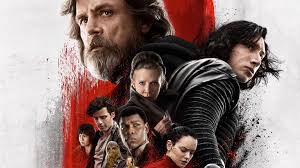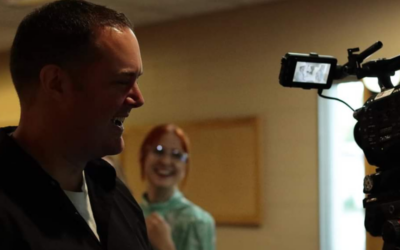By the time this paper is in your hands, the latest in the Star Wars saga will have hit theatres. Hype is at an all-time high; Star Wars is practically synonymous with the holiday season now. Following Disney’s acquisition of the franchise from Lucasfilm, a new entry in the series has been released right before Christmas for the past three years; 2015’s The Force Awakens, last year’s Rogue One: A Star Wars Story and now, The Last Jedi. Let me assure you, this article was written before the release of the new film, so it will be 100 per cent spoiler free.
The chronology of the series can admittedly be seen as a little convoluted. Series creator George Lucas has stated in the past that he’d written an extensive backstory to the original film. Supposedly, he’d written an extensive synopsis of what he envisioned the first film to be. This first draft was written in 1973, was titled Journal of the Whills and began (and I quote) as follows: “This is the story of Mace Windu, a revered Jedi Bendu of Ophuchi who was related to Usby C.J. Thape, Padawaan learner of the famed Jedi.” Windu would eventually become an important character in the prequel trilogy (portrayed by Samuel Jackson), however, the story was rewritten and fleshed out several times, eventually becoming the film we know today.
Chronologically, it’s the fourth film in the series but the first to be made and released in theatres. The studio had very little faith in the film; apparently, most people believed it wouldn’t do well. In spite of this, Lucas wanted to keep the ending fairly open-ended, so as to leave room for the story to continue. Upon release, it was simply titled Star Wars but after it became the gigantic success that it was, the subtitle Episode IV: A New Hope was added to the name. Two sequels spawned; The Empire Strikes Back and Return of the Jedi. Sixteen years later, the first film of the prequel trilogy was released in 1999, The Phantom Menace, shortly followed by Attack of the Clones and Revenge of the Sith, leading the story back into the original trilogy from the ’80s.
George Lucas had hinted in the past about having ideas for the story to continue past Episode VI but Star Wars return from the dead came as a bit of a surprise. Lucas ultimately changed his mind after the prequel trilogy was completed. The films were large successes (financially), but received mixed reviews and faced a barrage of backlash from many fans. Personally, I wouldn’t be surprised if this backlash is what ultimately changed Lucas’s mind about moving forward with a sequel trilogy, but I digress. Eventually, Disney bought the franchise from Lucas in 2012, for over an unprecedented $4 billion. He contributed his ideas and plans for the direction he thought the new films could go in, though how much, if any, of those ideas made it into the first of the sequel trilogy, The Force Awakens, is unknown.
Naturally, an avalanche of anticipation preceded that film’s release. It was the next in arguably the biggest series of movies ever made; the film that was never supposed to be made. Some celebrated that George Lucas wouldn’t be involved (somewhat ironic, considering none of this would ever have existed without him) while others were petrified at the thought of what Disney would do with the franchise. When the first trailer for The Force Awakens dropped, people lost their minds. Most in excitement, but some for more eye-roll inducing reasons. Naturally, the trailer was the world’s first introduction to the new characters. We didn’t necessarily know who they were at the time, but we saw Daisy Ridley as Rey and John Boyega as Finn, a woman and a black man, respectively.
Well heaven forbid but some people lost their minds. “How can a woman be the lead?” “Why is the storm trooper black?” whine, whine, whine, bitch, bitch, bitch, etc. Some even threatened to boycott the movie because of it. I mean, it’s not like there’s ever been any women leads or black characters in any of the previous Star Wars movies before. Oh wait! There has been. Princess Leia, Lando Calrissian, Padmé Amidala, Mace Windu, to name a few. Leia, originally seen as the ‘damsel in distress’, she nearly immediately turns the tides on her saviours, with her sass, quick wit and talent with a blaster. Throughout the rest of the original trilogy (and now continuing into the sequels) she took the fight to the Empire, kicking ass left, right and centre. Even when she was trapped by Jabba the Hutt and forced to wear the infamous golden bikini, she still held her wits about her; she was ultimately the one to take Jabba out, using the chains that bound her to choke the hideous space slug to death. The aforementioned Mace Windu, from the prequel trilogy, was portrayed as being one of the most powerful Jedi left in the galaxy, often seen as second only to Yoda.
Not to mention, the Star Wars universe is riddled with hundreds of space aliens and droids, all of whom interact and live with humans on a daily basis. Generally speaking, the characters of this universe have more important things to deal with than superficial differences between people. In interviews, Mark Hamill has even addressed his character, Luke Skywalker’s, sexuality: “ … fans are writing and ask all these questions, ‘I’m bullied in school … I’m afraid to come out.’ They say to me, ‘Could Luke be gay?’ I’d say it is meant to be interpreted by the viewer … if you think Luke is gay, of course he is. You should not be ashamed of it. Judge Luke by his character, not by who he loves.”
And there you have it. When busy battling the Galactic Empire for their lives and their freedom, the characters of Star Wars are too busy for some of their audience’s qualms.
Since The Force Awakens release, most of these complaints have died down and no one seems to be boycotting The Last Jedi for such ridiculous reasons. Quite frankly, it was never meant to be a political statement in the first place. There’s been a lot of talk lately about representation of minorities in media, specifically movies. In my oh-so-humble opinion, Star Wars handles this better than most. Like the universe it exists in, discrimination based on race, gender, etc. is hardly the point. In The Force Awakens the point of the story wasn’t that Rey couldn’t be a Jedi because she was a woman. Nor could Finn not be a hero because he was black. The closest the film ever gets to referencing this, is a scene where Rey and Finn are running together away from stormtroopers. Finn tries to take Rey’s hand, she has none of it and they continue running. That was it.
This is exceptionally simple because the story doesn’t get bogged down because of the stupidity that plagues reality. Often, when characters who are black are highlighted, the film surrounds issues such as slavery. If a gay character is highlighted, it’s more often than not because that character is in a ‘gay film,’ where the story completely surrounds the fact that they’re gay and the struggles they go through for being gay. In the latest sequel trilogy, Rey isn’t the new chosen one because or against her being a woman. Star Wars doesn’t need to treat its characters as commodities, exceptions nor burdens. They’re merely people, in a galaxy far, far away, resisting a common enemy for truth and justice. No matter who you are or where you come from, you’re a person; regardless if you’re a princess from Alderaan or a poor farm boy from Tatooine.
May the force be with you.
– Alan Holmes, Entertainment Co-Editor
Image via StarWars.com





